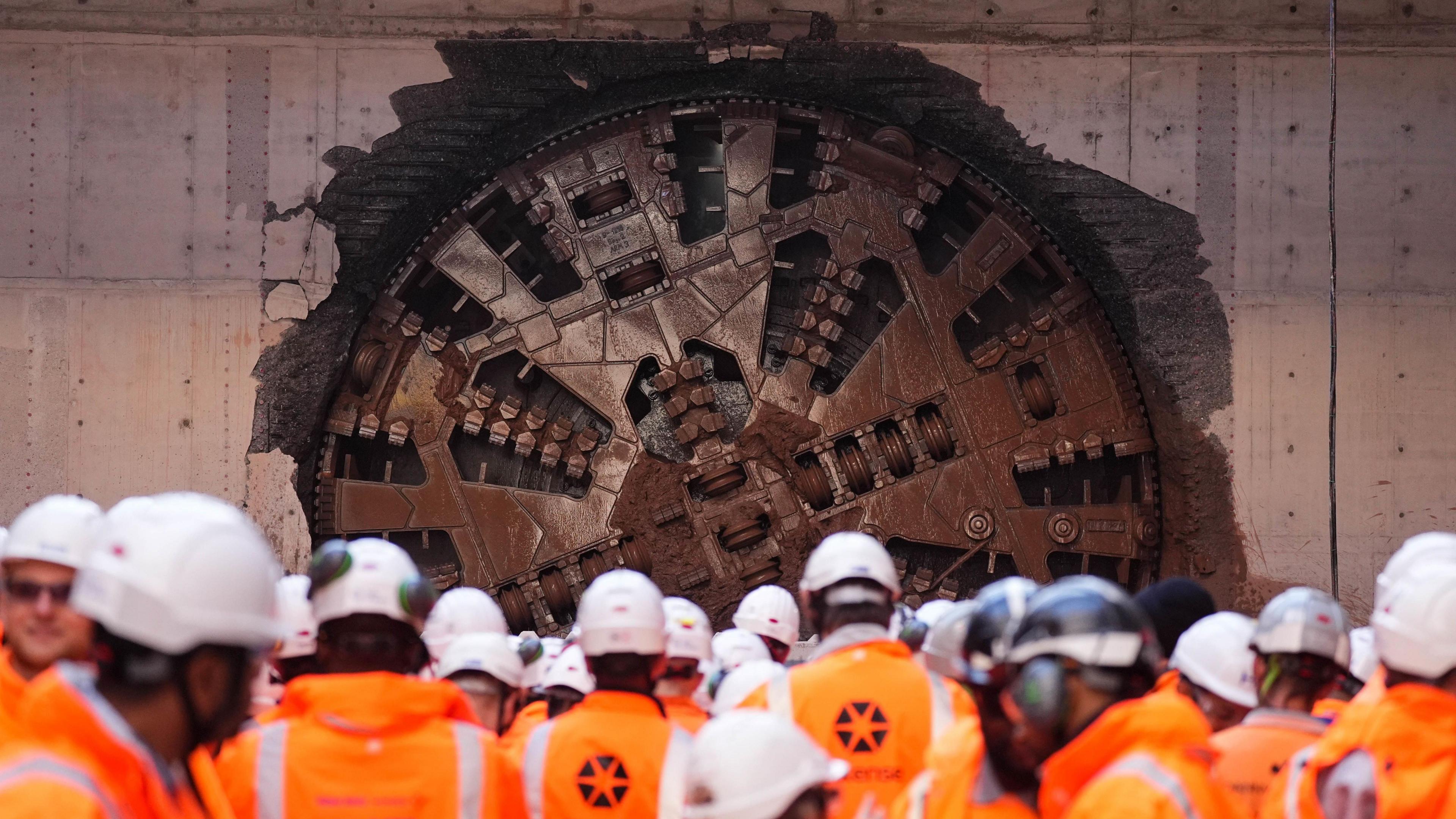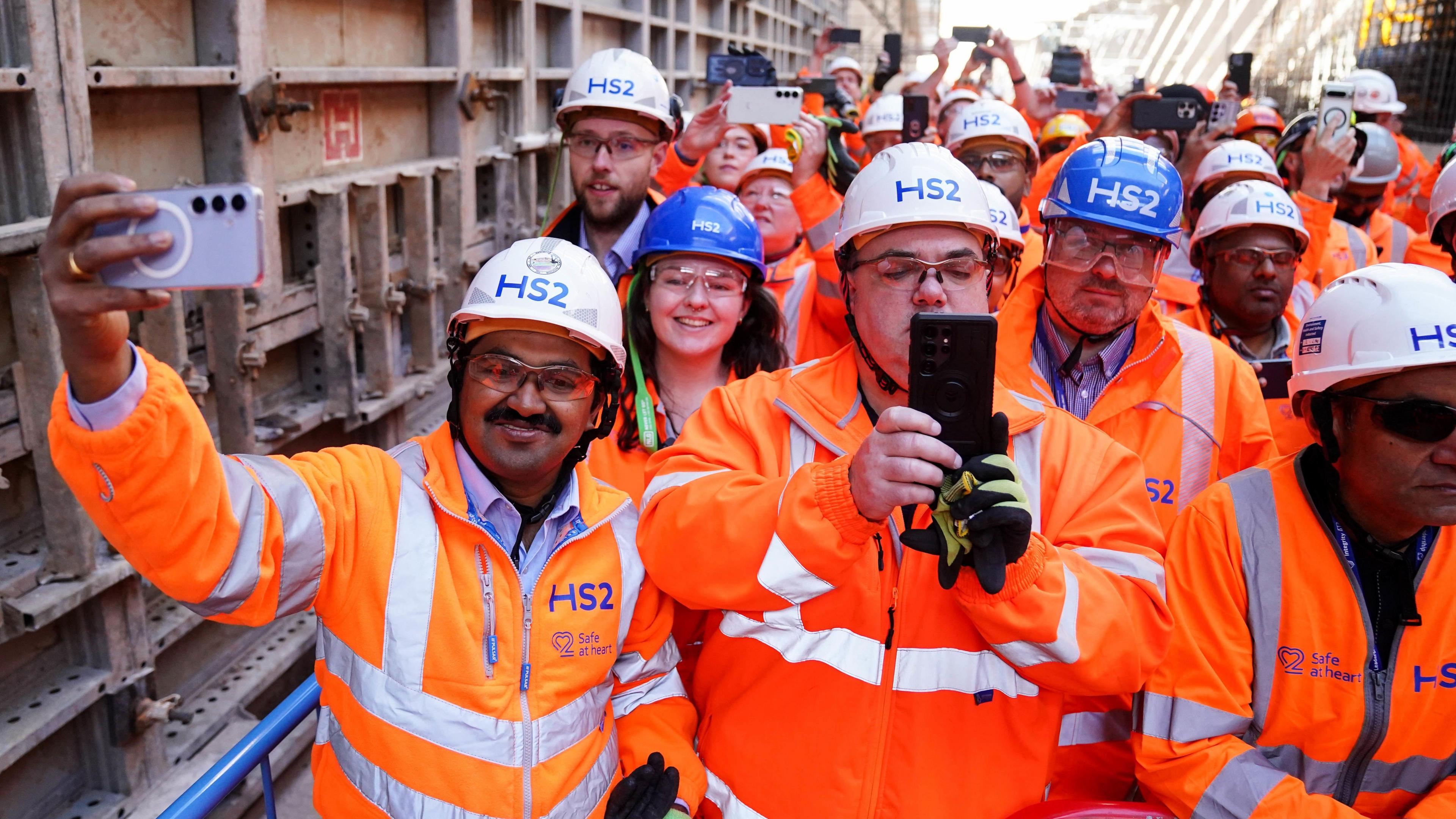HS2 tunnel machine breaks through for milestone
Watch as the HS2 boring machine reaches Birmingham
- Published
A giant HS2 boring machine has broken through to complete the first section of a three and-a-half mile (5.6km) tunnel on the route's approach into Birmingham.
The 125m (137yd) long, 1,600-tonne machine emerged on Friday morning after 652 days and nights of construction work.
The device was named Mary Ann by the local community in a nod to the Warwickshire-born writer George Eliot, which was the pen name of Mary Ann Evans
The tunnel is the first of two bores of the Bromford Tunnel, running from Water Orton in north Warwickshire to Washwood Heath in Birmingham, passing under the area's motorway network and the River Tame.
The breakthrough - HS2's first in Birmingham - was described by officials as a "significant milestone" for the line.
About 31,000 people are employed on the programme across the 140-mile (225km) route.
An HS2 spokesperson estimated that the second bore of the Bromford Tunnel would be completed later this year by another tunnel boring machine, this one named Elizabeth, after the social reformer and activist Dame Elizabeth Cadbury,.

Crowds of people working on HS2 waited for the machine to dig through the last part of the tunnel
Following the excavation, teams will begin fitting out the tunnel with cross passages, concrete finishing works, base slabs and emergency and maintenance walkways.
At peak production, Mary Ann advanced at about 30m (98ft) each day, with teams reinforcing the tunnel with more than 20,000 pieces of concrete.
"Today's breakthrough is a significant milestone for the project and I'm immensely proud of the men and women who have worked day and night to bring Mary Ann and her crew home safely," said Mark Wild, HS2 Ltd's chief executive.
"Washwood Heath is set to become one of the most important sites on the entire HS2 network - the point at which the railway will be operated, controlled and maintained using the very latest digital technology."

About 31,000 people are working on the HS2 route
Mary Ann dug out about a million tonnes of soil to create the structure, which will become the longest railway tunnel in the West Midlands.
The earth which was excavated will be reused to support construction of a nearby network of 13 viaducts, officials added.
Get in touch
Tell us which stories we should cover in Birmingham and the Black Country
Follow BBC Birmingham on BBC Sounds, Facebook, external, X, external and Instagram, external.
Related topics
- Published8 May

- Published30 April
